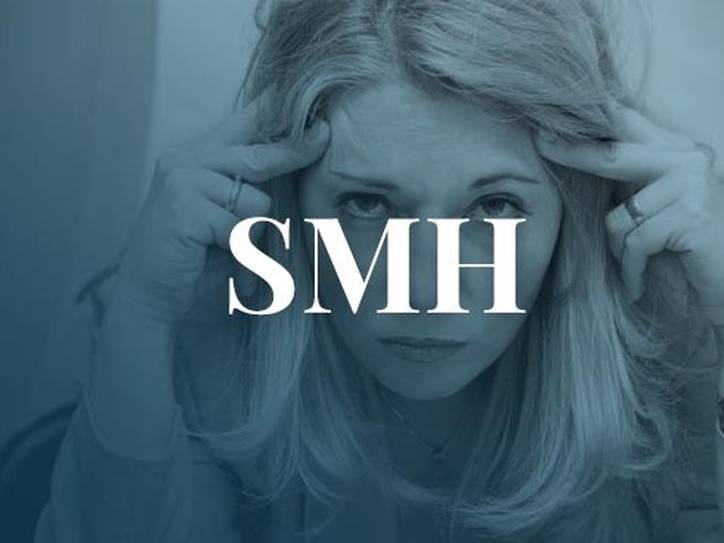SMH: A Head-Shaking Journey Through Digital Disappointment
In the fast-paced world of online communication, where brevity reigns supreme, acronyms and initialisms are king. Among these digital monarchs sits SMH, a seemingly simple yet potent four-letter code that conveys a spectrum of emotions. But what exactly does SMH mean, and how did this head-shaking expression become a ubiquitous part of our online vocabulary? Buckle up, because we’re diving deep into the world of SMH, exploring its origins, evolution, and the various ways it’s used to express disapproval, disbelief, and frustration in the digital age.
Decoding the Head Shake: The Meaning of SMH
SMH stands for “shaking my head.” It represents a nonverbal cue of disappointment, disapproval, disbelief, or even mild exasperation. Imagine someone witnessing something silly, illogical, or just plain wrong, and responding with a subtle head shake. SMH translates that physical gesture into the digital realm, allowing us to express our disapproval without needing emojis or lengthy explanations.
A History of Head-Scratching: The Origin Story of SMH
The exact origin of SMH is shrouded in the mists of internet history. However, evidence suggests its emergence in the mid-to-late 1990s, coinciding with the rise of online chatrooms, forums, and instant messaging services. Early instances of SMH can be traced back to bulletin board systems (BBS) and Usenet newsgroups, where users embraced brevity and informality in their communication.
As internet usage boomed in the early 2000s, SMH found fertile ground in text messaging and early social media platforms like AIM and MySpace. It provided a quick and convenient way to express negativity without getting bogged down in complex sentence structures.
The Evolution of a Digital Sigh: How SMH Has Grown
SMH hasn’t remained stagnant in the ever-evolving digital landscape. Here’s a glimpse into its fascinating journey:
- Variations: SMH spawned playful variations like “SMH my head” (redundant for emphasis) and “SMDH” (shaking my damn head) for stronger disapproval.
- Visual Representation: The internet, being a visual creature, gave birth to animated GIFs and memes depicting characters shaking their heads, perfectly complementing the textual “SMH.”
- Social Commentary: SMH transcended individual expressions and became a tool for social commentary. Users began using it to react to news, political events, and social injustices, highlighting collective disappointment.
Shaking Your Head Online: Using SMH Effectively
While SMH is a versatile tool, using it effectively requires some nuance. Here are some pointers:
- Context is Key: The meaning of SMH can vary depending on the context. In a lighthearted situation, it might convey amusement or playful disapproval. In a serious situation, it signifies strong disagreement. Understanding the context is crucial for accurate interpretation.
- Consider the Tone: SMH can come across as passive-aggressive. If you have strong feelings, consider a more direct approach.
- Overuse Alert: Excessive use of SMH can dilute its impact. Use it sparingly for maximum effect.
The Cultural Impact of SMH: Beyond Disappointment
SMH’s influence extends beyond expressing personal disapproval. It’s become a cultural phenomenon, shaping online interactions and humor. Let’s explore this deeper:
-
Collective Disgust: SMH has become a rallying cry for online communities. When faced with a shared disappointment, like a celebrity gaffe or a questionable policy decision, a collective “SMH” erupts, highlighting widespread disapproval. This virtual head-shaking expresses a united front of negativity.
-
Meme-Worthy Material: SMH thrives in the meme-obsessed corners of the internet. Images and videos paired with the caption “SMH” perfectly capture the absurdity of a situation. These memes can be funny, thought-provoking, or both, sparking online discussions and social commentary.
-
The Rise of Sarcasm: SMH can be used sarcastically, conveying the opposite of disapproval. A situation so ridiculous it becomes funny might be met with a sarcastic “SMH,” adding a layer of irony to the interaction.
-
The Power of Irony: SMH’s ability to be both sincere and sarcastic creates a powerful tool for irony. A user might comment “SMH” on a perfectly reasonable post, implying that the situation itself is so absurd that even a sensible statement sounds ridiculous. This ironic use of SMH adds a layer of complexity to online discourse.
-
The Future of Disapproval: SMH’s cultural impact paves the way for future expressions of disapproval. As online communication continues to evolve, new acronyms and emojis might emerge, but the core concept of shaking your head virtually to express negativity is likely to remain a staple of the digital age.
However, the rise of SMH also raises some concerns:
-
Nuance vs. Oversimplification: While convenient, SMH can oversimplify complex situations. A head shake can’t capture the full spectrum of emotions or the need for nuanced discussion.
-
Cyberbullying: The anonymity of the internet can embolden some to use SMH for malicious purposes. It can become a tool for cyberbullying, fueling negativity and hostility online.
-
The Decline of Civility: Overreliance on acronyms like SMH might lead to a decline in civil discourse. Expressing complex emotions with words fosters deeper understanding than a simple head shake, virtual or otherwise.
SMH: Frequently Asked Questions
Q: Does SMH have any other meanings?
A: While uncommon, some might interpret SMH as “so much hate” or “scratching my head,” depending on the context.
Q: Is SMH appropriate for formal communication?
A: No, SMH is considered informal internet slang. Use it in casual settings like texting or social media with friends.
Q: Are there alternatives to SMH?
A: Absolutely! You can express disapproval with words like “disappointed,” “disagree,” or even emojis like the facepalm (♀️) or disapproval ().
Q: How will SMH evolve in the future?
A: The future of SMH is uncertain, but it likely won’t disappear entirely. It might morph into new forms or be replaced by emerging digital expressions.
In conclusion, SMH is a powerful yet concise way to express disapproval, disbelief, or frustration online. Understanding its origin, evolution, and proper usage can enhance your digital communication skills. So, the next time you encounter something that makes you want to shake your head, remember, there’s a handy acronym for that. Just use it wisely!



